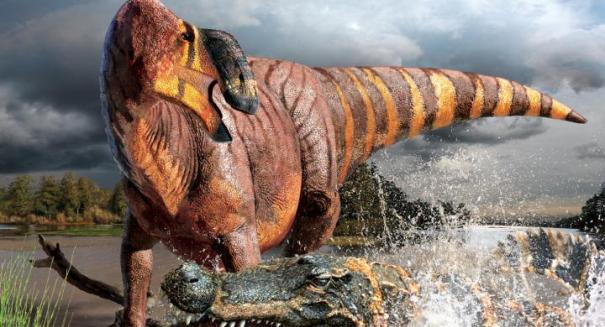
The "Nose King" dinosaur, Rhinorex condrupus, was recently identified from Utah fossils and could help scientists learn more about the evolutionary process.
It’s been a great summer for paleontology: the largest dinosaur, and the first aquatic one, were both discovered in the past few months. Now there’s another addition to the list: Rhinorex condrupus, meaning “the nose king.”
Rhinorex, analyzed by N.C. State’s Terry Gates and Brigham Young University’s Rodney Scheetz, was identified based on fossils found in 1992 in the high Book Cliffs of Utah. It measured thirty feet long and weighed four tons, but what made it stand out was its enormous, beaklike nose.
Rhinorex was an herbivore that lived 75 million years ago in swamplike territory. It was a hadrosaur in the same class at Gryposaurus, but had a much larger nose. It’s unclear what the nose was used for, but Gates believes it wasn’t for an increased sense of smell. “Maybe the nose was used as a means of attracting mates, recognizing members of its species, or even as a large attachment for a plant-smashing beak. We are already sniffing out answers to these questions.”
Gates and Scheetz were fortunate to work with well-preserved fossils including a partial skeleton, skin impressions, and almost a fully complete skull.
Scientists aren’t sure if Rhinorex lived at the same time as Gryposaurus, but the species look very similar. There are a few differences, though- Gryposaurus most likely lived in hills and forests, whereas Rhinorex lived in an estuary habitat. The two habitats are less than 200 miles apart, which means that migration and adaptation could have occurred in this case.
If Rhinorex did evolve from Gryposaurus, it would be the missing link between Gryposaurus and later hadrosaurs such as Kritosaurus.
The discovery and identification of Rhinorex is significant for understanding evolutionary patterns and trends. Scientists still need to determine exactly when the dinosaur lived and how it fits in with additional organisms on the dinosaur family tree.
Leave a Reply